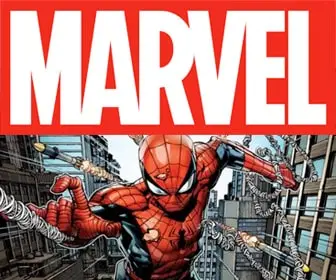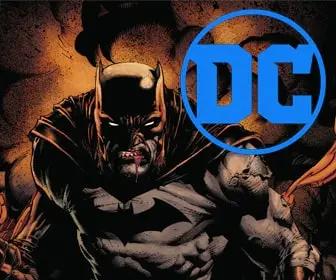
Quicksilver: From Comics to Cinematic Icon
In the pantheon of Marvel Comics’ superheroes, Quicksilver stands out as a character who embodies both the complexities of family drama and the thrill of superhuman abilities. Known for his lightning-fast speed, Pietro Maximoff, aka Quicksilver, has zipped his way from comic book panels to the big screen, leaving a significant impact on both mediums. This blog delves into the fascinating journey of Quicksilver, exploring his origins, powers, and the unique role he plays in the Marvel Universe.

Origins: A Quick Start
Quicksilver first dashed onto the scene in “X-Men” #4 in 1964, created by the legendary duo of Stan Lee and Jack Kirby. Born as Pietro Maximoff, Quicksilver is the twin brother of Wanda Maximoff (Scarlet Witch) and, for a time, was believed to be the son of Magneto, the infamous mutant villain. His backstory, filled with twists and turns, speaks to a life of constant change, mirroring his super-speed abilities.
Family Ties: A Complex Web
One of the most compelling aspects of Quicksilver’s character is his relationship with his family, particularly his sister Wanda. Their bond, fraught with emotional depth, adds a layer of human vulnerability to Quicksilver’s otherwise brash demeanor. This complexity is further enhanced by his association with Magneto, whether as a father figure or adversary, providing a rich narrative vein that has been explored in various comic arcs.
Powers: Faster Than the Eye Can See
Quicksilver’s primary ability is superhuman speed, which includes running at the speed of sound and beyond. This power isn’t just limited to physical speed; his reflexes, agility, and thought processes are also incredibly fast. This makes him an unpredictable and formidable opponent in battle. Over time, his powers have evolved, often depicted as a result of his mutant gene or experimental enhancements.
More Than Speed: Evolution of Abilities
While speed remains his hallmark, Quicksilver’s abilities have been expanded in different comic iterations. These include time manipulation, increased durability, and even the power to create sonic booms. This evolution reflects the character’s adaptability and the creative liberties taken by different writers and artists to keep him relevant and intriguing.
Cinematic Impact: A Dual Presence
Quicksilver’s transition to the silver screen is unique in the superhero genre. He appears in both the Marvel Cinematic Universe (MCU) and the X-Men film series, portrayed by different actors due to complex character rights issues. Each portrayal highlights different aspects of his personality and powers, offering fans varied interpretations of the speedster.
MCU vs X-Men: Differing Paths
In the MCU, Quicksilver’s story is short-lived yet impactful, portrayed by Aaron Taylor-Johnson. His sacrifice in “Avengers: Age of Ultron”
provides a poignant moment, deepening the emotional landscape of the MCU. On the other hand, the X-Men series, with Evan Peters as Quicksilver, takes a lighter approach. His scenes, especially in “X-Men: Days of Future Past,” showcase not only his incredible speed but also a whimsical, carefree attitude, offering a stark contrast to his MCU counterpart.
Challenges and Controversies: Speed Bumps Along the Way
Quicksilver’s journey hasn’t been without its challenges. The character has been at the center of various controversies, from the fluctuating details of his parentage to the dual film rights leading to differing cinematic portrayals. These issues reflect broader challenges in comic book storytelling, such as maintaining continuity and managing character rights across various media platforms.
Adaptation and Evolution: Keeping Pace with Change
Despite these challenges, Quicksilver remains a beloved character. His ability to adapt and evolve mirrors the ever-changing landscape of comic book narratives and film adaptations. He serves as a testament to the enduring appeal of superheroes and their stories, capable of resonating across different mediums and generations.
Collectors
Every Quicksilver fan should consider adding these five essential comic book issues to their collection. These issues capture pivotal moments in Quicksilver’s character development and storyline within the Marvel Universe:
- “X-Men” #4 (1964): This is the first appearance of Quicksilver, where he is introduced alongside his twin sister, Scarlet Witch, as a member of the Brotherhood of Evil Mutants. Created by Stan Lee and Jack Kirby, this issue is a must-have as it marks the beginning of Quicksilver’s journey in the Marvel Universe.
- “Avengers” #75 (1970): This issue is significant as it marks Quicksilver and Scarlet Witch’s transition from villains to heroes, joining the Avengers. It’s a pivotal moment that shapes Quicksilver’s role in future Marvel storylines, highlighting his complex character development from antagonist to protagonist.
- “X-Factor” #87 (1993): A profound issue where Quicksilver undergoes a psychological evaluation. It offers deep insights into his character, motivations, and the complexities of his relationship with his sister and other characters. This issue is highly regarded for its exploration of Quicksilver’s psyche.
- “Quicksilver No More” story arc in “Avengers” #188-190 (1979): This story arc is crucial as it explores Quicksilver’s identity crisis and his struggle with his place in the world, both as a superhero and a person. It’s a deep dive into his character beyond his superhuman speed.
- “Son of M” #1-6 (2006): This limited series is a must-read for Quicksilver fans. Following the events of “House of M,” Quicksilver deals with the loss of his powers and the subsequent journey to regain them. This series is essential for understanding the character’s development and his relationship with the Inhumans, especially as it relates to his usage of the Terrigen Mists to restore his abilities.
Denouement: The Enduring Legacy of Quicksilver
Quicksilver’s legacy in the Marvel Universe is a testament to the enduring appeal of complex characters who can evolve and resonate across different eras and mediums. His journey from comic book pages to the big screen exemplifies the timeless nature of superhero narratives and their ability to adapt to the changing tastes and expectations of audiences. Whether racing through comic panels or lighting up the cinema screen, Quicksilver remains a captivating figure in the superhero genre, a character whose speed is matched only by the depth of his story.
Quicksilver’s tale is far from over. As the Marvel Universe continues to expand, there’s always room for him to zip back into the spotlight, reminding us of the limitless potential of these extraordinary characters to surprise, delight, and inspire.












